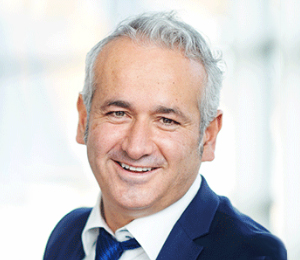Strategy Implementation Post-COVID Crisis, and the Urgent Need for Implementation CompetenciesAccel5® contributor Antonio Nieto-Rodriguez explains the four crucial topics that each leader should prioritize post-COVID to ensure successful strategic implementation in a professional world
By Antonio Nieto-Rodriguez | June 4, 2021
Last year we saw unprecedented changes in the world, which have transformed the business landscape in which organizations operate.
Besides the acceleration of changing consumer needs, CEOs, Boards, directors, executives, leaders, and senior managers have to face the following:
- A never-ending crisis.
- Languish market recovery.
- An increase of new fierce entrants in their industries, either as start-ups or businesses coming from other industries in desperate need of other sources of revenues.
Most business management theories and frameworks that we learned in the past no longer apply. Many scholars and experts are trying to adapt or create new frameworks that can help leaders succeed in this unusual scenario. One of the new areas that has received attention recently is strategy implementation, a field in which we have researched hundreds of companies to understand what makes the very few successful when implementing their strategies.
In this post, we share four topics that will be, or continue to be, trending issues in the area of strategy implementation. After the post-COVID crisis, leaders should put these tactics on their priority list if they want to increase their chances for implementing their strategy and strategic initiatives successfully.
“Keep the organization focused, don’t run away from the ‘tough choices’, and follow them through”
1. Increase FOCUS
In the past few years, we saw many scholars and business management gurus highlighting the importance of focus for individuals, leaders, and organizations. It is an easy and fancy word to say; I have seen many executives buy in and believe the benefits of “less is more” — yet when they are with the executive team around the table, it is difficult to make the tough choices.
A nice example of a lack of focus is the comeback of Lego®. Once a leading business, Lego almost disappeared in the late ’90s due to a complete loss of focus. Between 1994 and 1998, they entered into a frenzied state of launching new products to market, going from 109 in 1994 to 347 in 1998. The new CEO, an ex-McKinsey consultant (and project manager), turned Lego around by recovering that initial focus.
We recommend that you decide with your executive team:
- Which one, two, three, or a maximum of five products/services (the fewer, the better), your organization will pay full attention to promote, improve and sell?
- What are the top three strategic initiatives your team will execute, even if the organization falls apart?
- What other initiatives you are currently working on should be canceled? I have seen many organizations afraid of “canceling” projects, so they use the word “delay.”
“Complexity is one of the biggest hinders for the agility of response; it creates implementation paralysis.”
2. Reduce COMPLEXITY
Since the financial crisis in 2008, organizations have been trying to reduce the complexity of their structures to become more agile in responding to the new and unprecedented business landscape. Both public and private sector organizations have launched many initiatives to become “leaner,” “fitter,” “nimbler,” and to “cut the fat.” Yet these efforts have been short-term impulses without a clear vision of where the organization was going, which in the end often has the opposite effect — increased complexity and a permanent feeling of “never-ending change in the organization but going nowhere”. A marketing manager in a large international bank recently told me, “I don’t know any more what I will be doing in six months, it is not clear if my department will still be there, we have been in a fire-fighting mode over the past three years.”
We can also see an increased complexity in the number of committees in an organization. Behind this proliferation, there is the perception that people participating in committees feel essential; the more organizations you belong to, the higher your status in the organization. Committees’ objectives are often around oversight, approval, validation, monitoring certain activities, and processes. Yet what they need to do is slow down time to market and reduce the agility to respond to the competition or changing market needs.
One way to reduce complexity and increase agility is to apply the following principle: assign corporate teams to lead the strategic mid/long term objectives transversally (e.g., innovation, strategic initiatives, etc.), while empower and leave local flexibility to the business units to work on their local priorities and short-term objectives (e.g., sales, customer services, etc.).
“Alignment has to start at the top and then cascade throughout the organization”
3. Foster ALIGNMENT
In a survey on strategy implementation from PwC Strategy&, executives responded to the question: “What is the one thing that would make the most difference to closing the strategy-implementation gap at your company if resolved?” Alignment to the strategy was by far the number one answer among more than 20% of respondents.
There is no doubt that alignment at the top is one of the critical factors in successful strategy implementation. The executive team must develop a shared understanding of the vision and strategic objectives of the organization. Often this means that senior executives will need to adjust and give up some of their own plans to reach that alignment. They must be fully in sync and speak with one voice, and they also have to believe and be 100% committed to achieving that vision and common objectives. Over time we have become “socially smart”—we only need to see the body language of a leader for 10 seconds to recognize if he/she believes in what they say.
The aligned vision and roadmap must be translated into a simple one-page document that every single employee of the organization understands. One of the most successful templates for this is the Strategy Map, from the Balanced Scorecard concept from Harvard professors Kaplan & Norton. You can develop your own strategic roadmap. You don’t need to rely on their form – what matters is the content and the key messages.
To address that need, the Institute has developed the Strategy Implementation Roadmap© (SIR), which can be used as a compass to help organizations and leaders better understand the critical elements of successful implementation. The SIR provides the basis for the Institute’s courses and provides a step-by-step guide for implementing a strategy.
“Establish a central Strategy Planning and Implementation Office reporting to the CEO, with a seat in the executive suite, to drive strategy implementation.”
4. Streamline STRATEGY IMPLEMENTATION OFFICES
This year, more and more organizations will establish a Strategy Planning and Implementation Office that will report to the CEO and whose director will be a member of the top management team. Today every organization — small, medium, and large — has multiple departments and entities working, in one way or another, on strategy formulation and implementation matters.
- Strategic planning office
- Corporate planning office
- CEO office
- Project portfolio management office
- Program management office
- Project management office
This proliferation of departments or offices, which have significant overlapping activities and responsibilities, create large amounts of bureaucracy, multiplication of reports, and a lot of frustration, which leads to organizational paralysis and failure to monitor the implementation of the strategy.
After the COVID-19 crisis, we will see how organizations will consolidate and streamline all these departments, creating the Strategy Planning and Implementation Office. This will combine both formulation and implementation with driving strategy implementation. Due to the importance and sensitivity of this new central independent entity — which breaks lots of little empires, silos, and old habits — it needs to be driven by the CEO. Interestingly, today you can already find several jobs in LinkedIn with the Strategy Implementation Officer role.
Interested to see what Accel5 has to offer?

Antonio Nieto-Rodriguez is considered one of the most influential thinkers in management and leadership. His research and global impact was recognized by Thinkers50 in 2017 with its Ideas into Practice Award. Nieto-Rodriquez is a contributor to the Harvard Business Review and other publications worldwide. An economist with an MBA from London Business School and Insead’s International Director Program, he is fluent in five languages.



